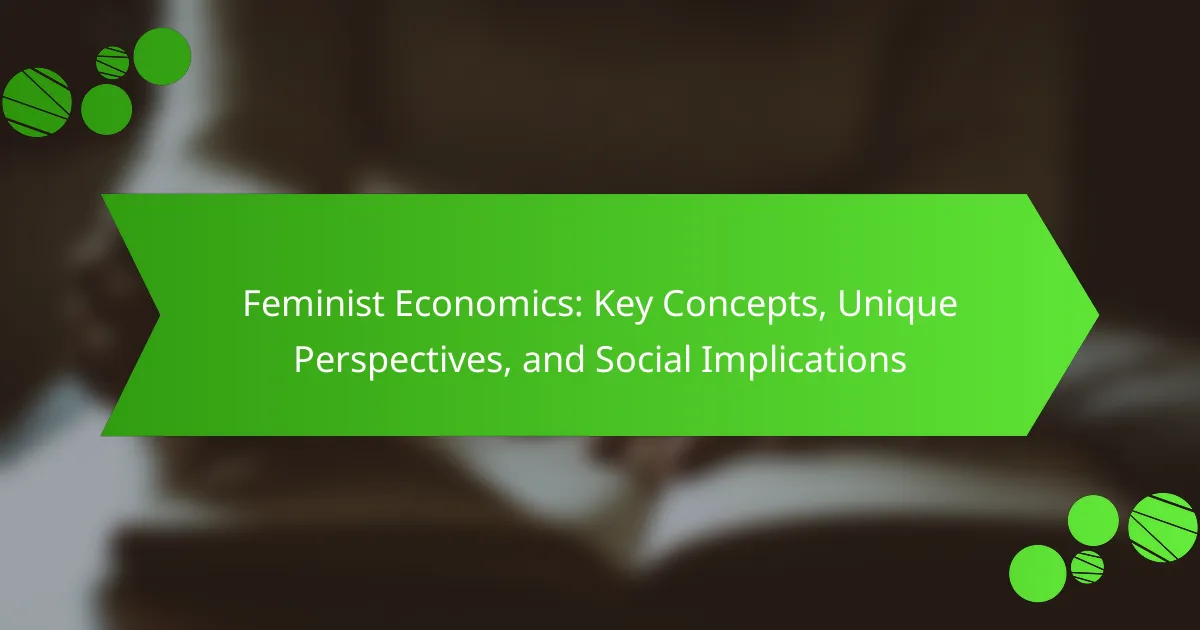Keynesian Economics is an economic theory developed by John Maynard Keynes that emphasizes the importance of total spending, or aggregate demand, as the primary driver of economic growth and employment. This theory advocates for government intervention, particularly during economic downturns, to stimulate demand through increased public spending. Historical applications of Keynesian policies, such as the response to the Great Depression and the 2008 financial crisis, demonstrate their effectiveness in mitigating recessions and promoting recovery. The article will explore the principles of Keynesian Economics, its real-world applications, and the implications for future fiscal policies, including the potential impact on government debt and inflation control.

What is Keynesian Economics?
Keynesian economics is an economic theory that emphasizes total spending in the economy. It asserts that aggregate demand is the primary driver of economic growth and employment. Developed by John Maynard Keynes during the Great Depression, it challenges classical economics. Keynesian economists advocate for government intervention to manage economic cycles. They argue that during recessions, increased government spending can stimulate demand. Historical context shows that Keynesian policies were implemented in the 1930s to combat economic downturns. This approach has influenced modern fiscal policy frameworks globally. Empirical evidence supports the effectiveness of Keynesian strategies in various economic crises.
How did Keynesian Economics originate?
Keynesian Economics originated from the ideas of economist John Maynard Keynes. His seminal work, “The General Theory of Employment, Interest, and Money,” published in 1936, challenged classical economic thought. Keynes argued that aggregate demand is the primary driver of economic growth and employment. He emphasized the role of government intervention in managing economic cycles. This approach gained prominence during the Great Depression, as traditional theories failed to explain high unemployment and stagnant growth. Keynesian principles advocate for increased public spending during economic downturns to stimulate demand. These ideas reshaped economic policy and influenced modern macroeconomic theory.
What historical events influenced the development of Keynesian Economics?
The development of Keynesian Economics was influenced by several historical events. The Great Depression of the 1930s was a critical catalyst. It exposed the limitations of classical economics in addressing widespread unemployment and economic stagnation. John Maynard Keynes published “The General Theory of Employment, Interest, and Money” in 1936 as a response to this crisis. His ideas emphasized the importance of government intervention in the economy. World War II further demonstrated the effectiveness of Keynesian policies in stimulating economic growth through government spending. The post-war economic boom also reinforced the relevance of Keynesian principles. These events collectively shaped the framework of Keynesian Economics and its acceptance among policymakers.
Who was John Maynard Keynes and what were his contributions?
John Maynard Keynes was a British economist known for his significant contributions to economic theory. He is best recognized for founding Keynesian economics. This approach emphasizes the role of government intervention in the economy, particularly during recessions. Keynes argued that total demand is the primary driving force in an economy. He believed that insufficient demand could lead to prolonged periods of high unemployment.
Keynes’s most notable work, “The General Theory of Employment, Interest, and Money,” was published in 1936. In this book, he challenged classical economic theories that advocated for self-regulating markets. He introduced concepts such as the multiplier effect and liquidity preference. Keynes’s ideas influenced economic policies during the Great Depression. His advocacy for fiscal stimulus became a cornerstone of modern macroeconomic policy.
What are the core principles of Keynesian Economics?
Keynesian Economics is based on several core principles. One principle is that aggregate demand drives economic activity. This means that total spending in the economy influences production and employment levels. Another principle is the idea that government intervention is necessary during economic downturns. This intervention can take the form of fiscal policies, such as increased government spending or tax cuts.
Keynesian Economics also emphasizes the importance of consumer confidence. When consumers expect economic growth, they are more likely to spend, which boosts demand. Conversely, during recessions, a lack of confidence can lead to decreased spending and further economic decline.
Additionally, Keynesian theory advocates for the use of monetary policy to manage economic fluctuations. Central banks can influence interest rates to encourage borrowing and investment. These principles were notably applied during the Great Depression, when governments increased spending to stimulate recovery.
How does Keynesian Economics define aggregate demand?
Aggregate demand in Keynesian Economics is defined as the total demand for goods and services within an economy at a given overall price level and in a given time period. It encompasses consumption, investment, government spending, and net exports. Keynesians assert that aggregate demand drives economic growth and employment levels. When aggregate demand is low, it can lead to economic recession and high unemployment. Historical data, such as the Great Depression, supports this view. During that time, insufficient aggregate demand resulted in significant economic downturns. Therefore, Keynesian Economics emphasizes the importance of managing aggregate demand through fiscal and monetary policies to stabilize the economy.
What role does government intervention play in Keynesian Economics?
Government intervention plays a critical role in Keynesian Economics. It is essential for stabilizing the economy during periods of recession. Keynesian theory posits that during economic downturns, private sector demand often falls short. This shortfall can lead to increased unemployment and reduced consumer spending.
To counteract these effects, government intervention is necessary. Governments can increase public spending to stimulate demand. They may also implement tax cuts to encourage consumer spending. Such actions can help boost economic activity and restore confidence. Historical examples include the New Deal programs during the Great Depression. These programs involved significant government spending to revive the economy.
Research shows that fiscal policies can effectively mitigate recession impacts. A study by the International Monetary Fund highlights the positive effects of government spending during downturns. This evidence supports the Keynesian view of active government involvement in economic management.
Why is Keynesian Economics significant in modern economic theory?
Keynesian Economics is significant in modern economic theory because it emphasizes the role of government intervention in stabilizing economic fluctuations. This approach argues that during recessions, increased government spending can stimulate demand and reduce unemployment. John Maynard Keynes introduced this concept during the Great Depression, highlighting the inadequacy of classical economics in addressing economic downturns. Empirical evidence supports Keynesian principles, particularly during the 2008 financial crisis when stimulus packages were implemented to revive economic activity. Keynesian Economics remains influential in shaping fiscal policies worldwide. It provides a framework for understanding the relationship between aggregate demand and overall economic performance.
How has Keynesian Economics influenced economic policies globally?
Keynesian Economics has significantly influenced global economic policies by promoting government intervention during economic downturns. This economic theory, developed by John Maynard Keynes, argues that active fiscal policy can help manage economic cycles. Governments worldwide adopted Keynesian principles during the Great Depression to stimulate demand and reduce unemployment. For example, the New Deal in the United States implemented public works programs to boost the economy. Many countries also embraced Keynesian policies during the 2008 financial crisis, enacting stimulus packages to revive growth. Research indicates that these interventions helped mitigate the severity of recessions. Overall, Keynesian Economics has shaped modern economic policy frameworks globally, emphasizing the role of government in economic stability.
What criticisms have been levied against Keynesian Economics?
Criticisms of Keynesian Economics include its reliance on government intervention. Critics argue that this can lead to inefficiencies. They claim that such interventions may distort market signals. Another criticism is the theory’s assumption that consumers and businesses respond predictably to fiscal policies. Critics point out that this may not always be the case. Additionally, some economists argue that Keynesian policies can lead to inflation. They cite historical examples, such as the 1970s stagflation, to support this claim. Furthermore, critics highlight the long-term impact of accumulating national debt due to stimulus spending. They assert that this can burden future generations. Overall, these criticisms suggest that Keynesian Economics may not always provide optimal solutions.

How does Keynesian Economics apply in real-world scenarios?
Keynesian Economics applies in real-world scenarios by advocating for government intervention during economic downturns. This approach emphasizes increased public spending to stimulate demand. For instance, during the 2008 financial crisis, governments worldwide implemented stimulus packages. In the United States, the American Recovery and Reinvestment Act allocated approximately $787 billion to boost the economy. This act aimed to create jobs and promote consumer spending. Additionally, Keynesian policies have influenced monetary policy, leading central banks to lower interest rates during recessions. Empirical evidence shows that such interventions can shorten economic slumps. Countries employing Keynesian strategies often experience quicker recoveries from recessions. Thus, Keynesian Economics remains relevant in addressing contemporary economic challenges.
What are some historical examples of Keynesian Economics in action?
The New Deal in the United States during the 1930s is a prominent example of Keynesian Economics in action. It was implemented by President Franklin D. Roosevelt in response to the Great Depression. The New Deal focused on government spending to stimulate economic growth. Programs included job creation initiatives and public works projects. These efforts aimed to reduce unemployment and increase consumer spending.
Another example is the post-World War II economic policies in Western Europe. Many countries adopted Keynesian principles to rebuild their economies. The Marshall Plan provided financial aid to help stimulate economic recovery. This led to significant growth in productivity and living standards.
In the 2008 financial crisis, many governments implemented Keynesian measures. The U.S. introduced the American Recovery and Reinvestment Act. This included tax cuts and increased government spending to boost the economy. Similar strategies were employed in various countries worldwide to mitigate the recession’s impact.
These historical instances demonstrate the application of Keynesian Economics through government intervention to stabilize and grow economies during challenging times.
How did the New Deal embody Keynesian principles?
The New Deal embodied Keynesian principles by implementing government intervention to stimulate economic recovery. It aimed to increase demand through public works programs and social welfare initiatives. The government invested heavily in infrastructure projects, creating jobs and boosting consumer spending. Programs like the Civilian Conservation Corps (CCC) and the Works Progress Administration (WPA) directly employed millions. These efforts reflected John Maynard Keynes’ belief that active government involvement is necessary during economic downturns. The New Deal’s focus on deficit spending to finance these initiatives aligned with Keynesian theory. By prioritizing job creation and financial support for the unemployed, the New Deal sought to revive the economy and reduce the effects of the Great Depression.
What lessons were learned from the 2008 financial crisis regarding Keynesian policies?
Keynesian policies emphasized the importance of government intervention during economic downturns. The 2008 financial crisis demonstrated that proactive fiscal stimulus can stabilize economies. Many countries implemented stimulus packages, which supported recovery. For instance, the U.S. enacted the American Recovery and Reinvestment Act in 2009, injecting $787 billion into the economy. This intervention helped mitigate unemployment and boost GDP growth. Additionally, the crisis highlighted the need for better regulation of financial markets to prevent systemic risks. Overall, the lessons reinforced the relevance of Keynesian economics in addressing severe economic challenges.
How do different countries implement Keynesian Economics?
Different countries implement Keynesian Economics through government intervention in the economy. This often includes fiscal policies such as increased government spending and tax cuts. For instance, during economic downturns, countries like the United States have employed stimulus packages to boost demand. The 2009 American Recovery and Reinvestment Act is a key example of this approach. In contrast, countries like Japan have utilized quantitative easing to increase money supply and lower interest rates. This strategy aims to encourage borrowing and investment. Additionally, European nations have implemented Keynesian principles through coordinated fiscal policies during the Eurozone crisis. These measures aimed to stabilize economies and promote growth. Each country’s implementation varies based on its specific economic conditions and challenges.
What strategies have countries used during economic recessions?
Countries have used various strategies during economic recessions to stimulate growth and recovery. One common strategy is fiscal policy, which involves increasing government spending. This approach aims to boost demand and create jobs. For example, the U.S. implemented the American Recovery and Reinvestment Act in 2009, injecting approximately $831 billion into the economy.
Another strategy is monetary policy, where central banks lower interest rates. This action encourages borrowing and investment. The Federal Reserve cut rates to near-zero during the 2008 recession to support economic activity.
Additionally, countries may implement tax cuts to increase disposable income for consumers. This tactic aims to stimulate spending. The 2008 Economic Stimulus Act provided tax rebates to American households to promote consumer spending.
Countries also engage in quantitative easing, which involves purchasing financial assets to increase money supply. The European Central Bank employed this strategy to combat low inflation and stimulate growth during the eurozone crisis.
Lastly, some nations introduce social safety nets to support individuals during downturns. Unemployment benefits and food assistance programs help maintain consumer spending and stabilize the economy. These strategies collectively aim to mitigate the impacts of recessions and foster recovery.
How do cultural and political factors affect the application of Keynesian Economics?
Cultural and political factors significantly influence the application of Keynesian Economics. Political ideologies shape government policies that implement Keynesian principles. For example, left-leaning governments may favor increased public spending during economic downturns. Cultural attitudes towards government intervention also play a crucial role. In cultures that prioritize individualism, there may be resistance to Keynesian policies. Additionally, historical contexts affect how Keynesian Economics is perceived. Countries with a history of fiscal conservatism may be less inclined to adopt Keynesian measures. Evidence from the 2008 financial crisis shows that nations with strong political consensus were more successful in implementing Keynesian stimulus. This demonstrates the importance of both cultural and political alignment in the effectiveness of Keynesian policies.

What are the future implications of Keynesian Economics?
Keynesian Economics suggests that government intervention is essential for economic stability. Future implications include increased reliance on fiscal policies to manage economic cycles. This may lead to higher government debt levels as spending rises during downturns. Inflation control will remain a critical focus, as expansive monetary policies can drive prices up. The approach may also influence global economic policies, promoting coordinated efforts among nations. Additionally, it could shape debates on social welfare programs aimed at reducing inequality. Historical instances, such as the 2008 financial crisis, validate these implications, showing effective government action can mitigate severe recessions.
How might Keynesian Economics evolve in response to global challenges?
Keynesian Economics may evolve by integrating new data on global challenges. The rise of digital economies could shift focus towards technology-driven fiscal policies. Climate change necessitates investment in sustainable industries, altering traditional Keynesian approaches. Global inequality may prompt policies that prioritize equitable wealth distribution. Additionally, international cooperation could enhance the effectiveness of Keynesian strategies during global recessions. Historical instances, such as the 2008 financial crisis, show that adaptive fiscal measures can stabilize economies. Thus, Keynesian Economics is likely to adapt by addressing contemporary issues through innovative policy frameworks.
What role could Keynesian Economics play in addressing climate change?
Keynesian Economics can play a significant role in addressing climate change through government intervention. This economic theory advocates for active government policies to manage economic cycles. By promoting public investment in green technologies, Keynesian approaches can stimulate job creation in sustainable sectors. For instance, the Green New Deal proposes substantial government spending to transition to renewable energy. Historical examples show that government investment can lead to economic recovery, as seen during the Great Depression. Increased spending on infrastructure can also enhance resilience against climate impacts. Thus, Keynesian Economics provides a framework for integrating economic growth with environmental sustainability.
How can Keynesian principles inform responses to income inequality?
Keynesian principles can inform responses to income inequality by advocating for government intervention to stimulate demand. This approach suggests that increased government spending can help reduce unemployment and boost wages. When the government invests in public services and infrastructure, it creates jobs. These jobs lead to higher disposable income for workers. Higher disposable income can, in turn, reduce income inequality. Historical evidence from the New Deal in the 1930s shows that such interventions helped lift many Americans out of poverty. Additionally, Keynesian economics supports progressive taxation as a means to redistribute wealth. This can further address income disparities by funding social programs. Overall, Keynesian principles promote active government roles in mitigating income inequality through economic stimulus and redistribution.
What practical strategies can policymakers adopt from Keynesian Economics?
Policymakers can adopt several practical strategies from Keynesian Economics. One key strategy is increasing government spending during economic downturns. This approach stimulates demand and can lead to job creation. Another strategy involves implementing tax cuts to boost disposable income for consumers. Increased consumer spending can help drive economic recovery.
Additionally, policymakers can use fiscal stimulus packages to target specific sectors. For example, investing in infrastructure can create jobs and improve long-term economic productivity. Monetary policy, such as lowering interest rates, can also encourage borrowing and investment.
Evidence from the 2008 financial crisis supports these strategies. Governments that employed Keynesian principles, like the American Recovery and Reinvestment Act, saw quicker economic recovery. This demonstrates the effectiveness of these strategies in real-world applications.
How can governments effectively stimulate economic growth using Keynesian tools?
Governments can effectively stimulate economic growth using Keynesian tools by increasing public spending and lowering taxes. Increased government spending injects money into the economy, boosting demand for goods and services. This, in turn, encourages businesses to invest and hire more workers. Lowering taxes increases disposable income for consumers, which can lead to higher consumer spending. Historical evidence shows that during the Great Depression, the New Deal programs significantly increased employment and economic output. Additionally, the 2008 financial crisis saw stimulus packages that helped revive economic activity. These strategies illustrate the effectiveness of Keynesian tools in promoting economic growth.
What are the best practices for implementing Keynesian policies in today’s economy?
Best practices for implementing Keynesian policies today include increasing government spending during economic downturns. This approach stimulates demand and encourages economic growth. Targeted fiscal policies should focus on infrastructure, education, and healthcare. These sectors generate jobs and improve long-term productivity. Additionally, maintaining low interest rates can promote borrowing and investment. Central banks should support government initiatives through monetary policy. Policymakers must ensure timely interventions to counteract economic shocks. Historical evidence, such as the New Deal, demonstrates the effectiveness of these strategies in reviving economies. Implementing these practices can lead to sustainable growth and stability.
Keynesian Economics is an economic theory developed by John Maynard Keynes that emphasizes total spending in the economy as the primary driver of growth and employment. The article provides an overview of Keynesian principles, including the importance of aggregate demand, government intervention during economic downturns, and the historical context that shaped these ideas, particularly during the Great Depression and the 2008 financial crisis. It also discusses the global influence of Keynesian policies, criticisms of the theory, and practical strategies for implementing these principles in modern economic contexts. Additionally, the article examines how Keynesian Economics can address contemporary challenges such as climate change and income inequality.



